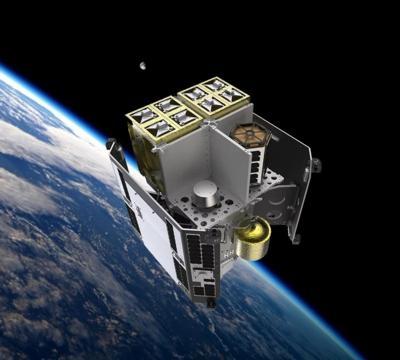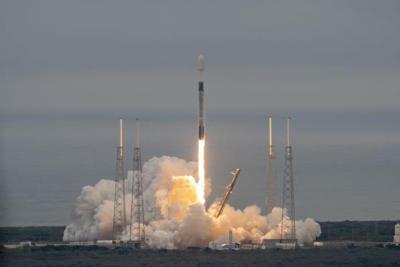Sun, Apr 03, 2022
D-Orbit's Package Includes Plant Growth Experiments, USAF Research Sats, and Personal Tchotchkes
D-Orbit's Spacelust has made its way into space aboard the SpaceX Transporter-4 mission, taking its spot as the 5th mission using their proprietary ION Satellite Carrier.

The ION system is designed to be a versatile and cost-effective orbital transfer vehicle designed both to precisely deploy satellites and perform technology demonstrations for third-party payloads in orbit. Spacelust saw the ION successfully deployed at a 500 km Sun synchronous orbit. D-Orbit chief commercial officer, Renato Panesi, said the 5th ION in its orbital fleet is a sign of their rapid growth.
“Every mission we launch is built upon the success of the ones that came before it," he said after news of a successful deployment was announced. "We are steadily increasing our performance with each new mission, expanding our customer base and growing our exceptional team. As we execute our strategic plans, we are continuing to demonstrate the strength of our technology and are advancing D-Orbit’s path to enabling the transportation and logistics infrastructure to drive the evolving space economy.”
Aboard the ION, payloads from Kleos Space, Upmosphere, and the Space Exploration Laboratory found their way to their designated positions. Kleos sent 4 satellites to augment their growing constellation, bringing the total to 12. The change will increase the average daily revisit rate to around 5 times per day over an area of interest as well as increase the accuracy of geolocation for frequency transmissions to within 300 meters for ISR customers around the world.
Upmosphere sent an oddity in line with the company's mission: A wooden UP-box containing customer mementos. Their operation advertises the capability to send personal effects into space for several years aboard the ION.

The Space Exploration Laboratory sent its 3U CubeSat, the PlantSat, in order to study the growth a plants in LEO in an environment designed to replicate conditions on the martian surface. It was joined by Suchai 2 and Suchai 3, which will perform "basic science research" funded by the U.S. Air Force Office of Scientific Research, a branch of the AFRL. The satellite data gleaned will be studied by multidisciplinary teams, which will "undertake cutting edge research on scientific exploration and technological development."
More News
Aero Linx: Aviators Code Initiative (ACI) Innovative tools advancing aviation safety and offering a vision of excellence for aviators. The ACI materials are for use by aviation pra>[...]
Make Sure You NEVER Miss A New Story From Aero-News Network Do you ever feel like you never see posts from a certain person or page on Facebook or Instagram? Here’s how you c>[...]
From 2016 (YouTube Edition): Who You Gonna Call When You Have a Rocket Engine that Needs a Spacecraft? While at EAA AirVenture 2016, ANN CEO and Editor-In-Chief, Jim Campbell, sat >[...]
"In my opinion, if this isn't an excessive fine, I don't know what is... The odds are good that we're gonna be seeking review in the United States Supreme Court. So we gotta muster>[...]
Expedite Used by ATC when prompt compliance is required to avoid the development of an imminent situation. Expedite climb/descent normally indicates to a pilot that the approximate>[...]
 ANN's Daily Aero-Linx (04.30.25)
ANN's Daily Aero-Linx (04.30.25) ANN FAQ: Turn On Post Notifications
ANN FAQ: Turn On Post Notifications Classic Aero-TV: Agile Aeros Jeff Greason--Disruptive Aerospace Innovations
Classic Aero-TV: Agile Aeros Jeff Greason--Disruptive Aerospace Innovations Aero-News: Quote of the Day (04.30.25)
Aero-News: Quote of the Day (04.30.25) ANN's Daily Aero-Term (04.30.25): Expedite
ANN's Daily Aero-Term (04.30.25): Expedite




